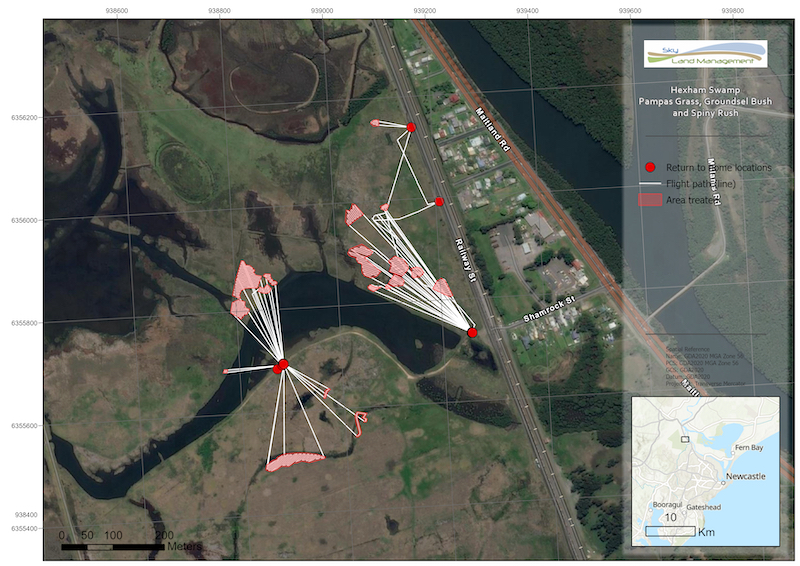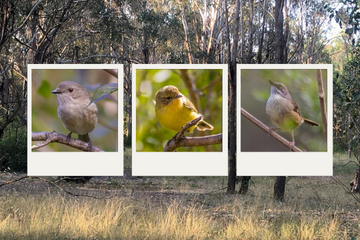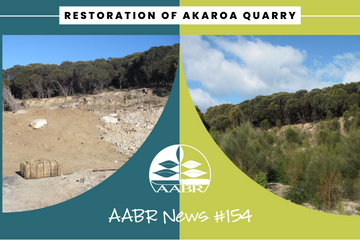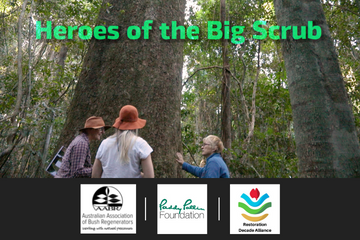Fig 1: The Fingal Head trial plot where buffalo grass was sprayed and slashed. After persistent follow up about 90% cover of natives has regenerated. Species include prickly couch, native violet, native lobelia, blady grass, plectranthus and native rats tail. Very small numbers of a few grassland forbs (including golden everlasting daisy) were planted. Photo: Keiran Kinney.
Fingal Headland is located on the Far North-Coast of New South Wales and is adjacent to the Tweed River estuary. Today the headland forms part of Fingal Head village and is heavily utilized for passive recreation such as whale watching and bush-walking. Fingal Head Coastcare Inc. is a long established and active group of Tweed residents that operates 4 days per week with many members attending several times a week, with support and assistance from Tweed Shire Council Natural Resources Management Unit.
Condition of the site before treatment. During the 19th & 20th century the headland suffered significant degradation due to grazing by goats. As a result. prior to treatment the headland (1.5 ha) was almost entirely covered with invasive buffalo grass Stenotaphrum secundatum. Consequently, in 2009 the group determined that the headland should be restored to a Maritime Themeda Grassland, using nearby Norries Headland and Hastings Point as reference communities. Both of these sites are hosts to relatively intact Themeda Grassland communities.
Works undertaken. Trials commenced in 2009 with the treatment of weed in a 100 m2 plot, followed by a similar-sized plot on more skeletal soils in 2010. Herbicide spraying of swathes of buffalo grass was followed by slashing and planting of very small numbers of a few grassland forbs (including golden everlasting daisy – Xerochrysum bracteatum, Evolvulus alsinoides, and Chamaecrista maritima). These were propagated in Fingal Coastcare’s nursery from stock sourced at Fingal Head and from other headlands in the vicinity. Follow up weeding was consistently carried. out.
What resulted. Natural regeneration occurred extensively on the trial plots. Regenerating species included prickly couch Zoyzia macrantha, native violet Viola banksii, Lobelia alata, blady grass Imperata cylindrica, plectrantus Plectranthus cremnus and slender rat’s tail Sporobolus creber. By spring 2010, after average rainfall and the consistent weed control, about 90% cover of naturally regenerated native species had occurred. Some native species had already self seeded, including the planted everlasting daisy and the naturally regenerating plectranthus. Weed follow up requirement was substantial and is ongoing. Results from the trial plots will now inform a plan for capturing the site and will include a planting plan for the reintroduction of missing species such as kangaroo grass Themeda triandra to guide the long term reinstatement of the goal community.
Contact: kierankinney@gmail.com






Leave A Comment